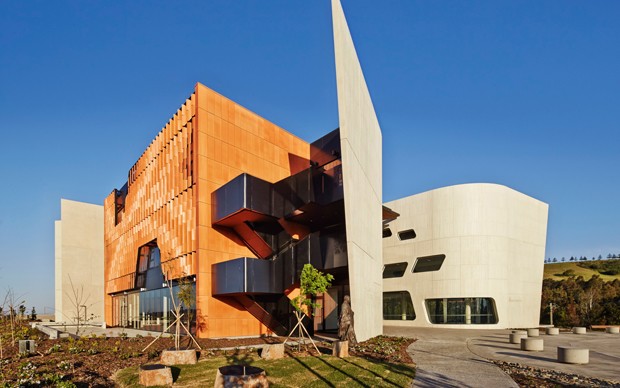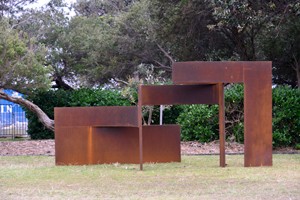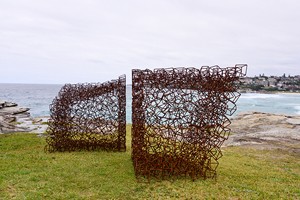The Nan Tien Institute and Cultural Centre in Wollongong, just south of Sydney, is opposite the long-standing Nan Tien Temple, the largest Buddhist temple in the southern hemisphere. The new Woods Bagot-designed tertiary education centre and multicultural art gallery uses a lotus flower design in a pristine building that, as the architect’s website says, is “devoid of excess”.
It also features terracotta as a coating that can be bonded on to traditional building materials, standard or with different shapes and forms, says the manufacturer, Axolotyl. It retains the integrity of natural terracotta but with various textures and colours, and can be used where you would normally use aluminium, CFC sheeting or stainless steel.
Axolotyl worked with building company Hi-Tec to develop the Institute’s terracotta facade. Aluminium was chosen as the substrate, says Axolotyl, because “it enabled each blade to be articulated around an axis and locked in place, something that could not be done with standard terracotta.” The blades shift in direction, giving the building texture and, from afar, conveying the look of a lotus leaf.

Nan Tien Institute and Cultural Centre. Image: Woods Bagot
Textures and different uses of materials have carved their place of importance in design as well, and were on show at Sydney’s annual Sculptures by the Sea. This incredibly popular Sydney event is worth seeing (allow me an aside to complain about the dearth of buses to get there from Bondi Junction station on a Sunday afternoon) for what creative minds can do with timber, fibre glass, granite, many types of steel, paper mache, found objects, perspex, bamboo, rope, copper, and spotted gum.
The outdoor ‘exhibitions’ also featured zinc buckets, stringy bark, mattress panels, a panel van, electric cable, plaster clay, vinyl, mesh, recycled timber, bronze, plastic bottles, plastic lids and discarded objects - though, really, these days ”discarded” in artistic circles is a misnomer.


Left: Paul Selwood (NSW), corbu III Right: Jennifer Crochane (WA), steel stack monument, Sculpture by the Sea, Bondi 2014. Images: Clyde Yee. Source: Sculpture by the sea
The importance of materials was also reflected in the 2014 Sustainability Awards. For instance, constituent parts of The Commons by Breathe Architecture, named Best of the Best , spanned natural light and ventilation and cross ventilation to all apartments, a solar hot water system and PV arrays, recycled timber and bricks, exposed concrete thermal mass, locally manufactured raw brass tap ware and double-glazed thermally broken windows, among others.

The Melbourne sustainable housing development also won the David Oppenheim award for sustainable architecture and the residential multiple housing award at the Australian Institute of Architects' National Architecture Awards.
And do not forget the Innovation of the Year award which went to the latest Colorbond Steel by BlueScope, which is a world first application for coated steel building products. Two magnesium compounds were added to the original zinc and aluminium coating to improve “the galvanic action of the zinc enabling the aluminium in the coating to more actively protect the base steel”.
Deborah Singerman is a Sydney-based journalist and editor, specialising in architecture and design, including city, community, society, economy, sustainability and culture.

